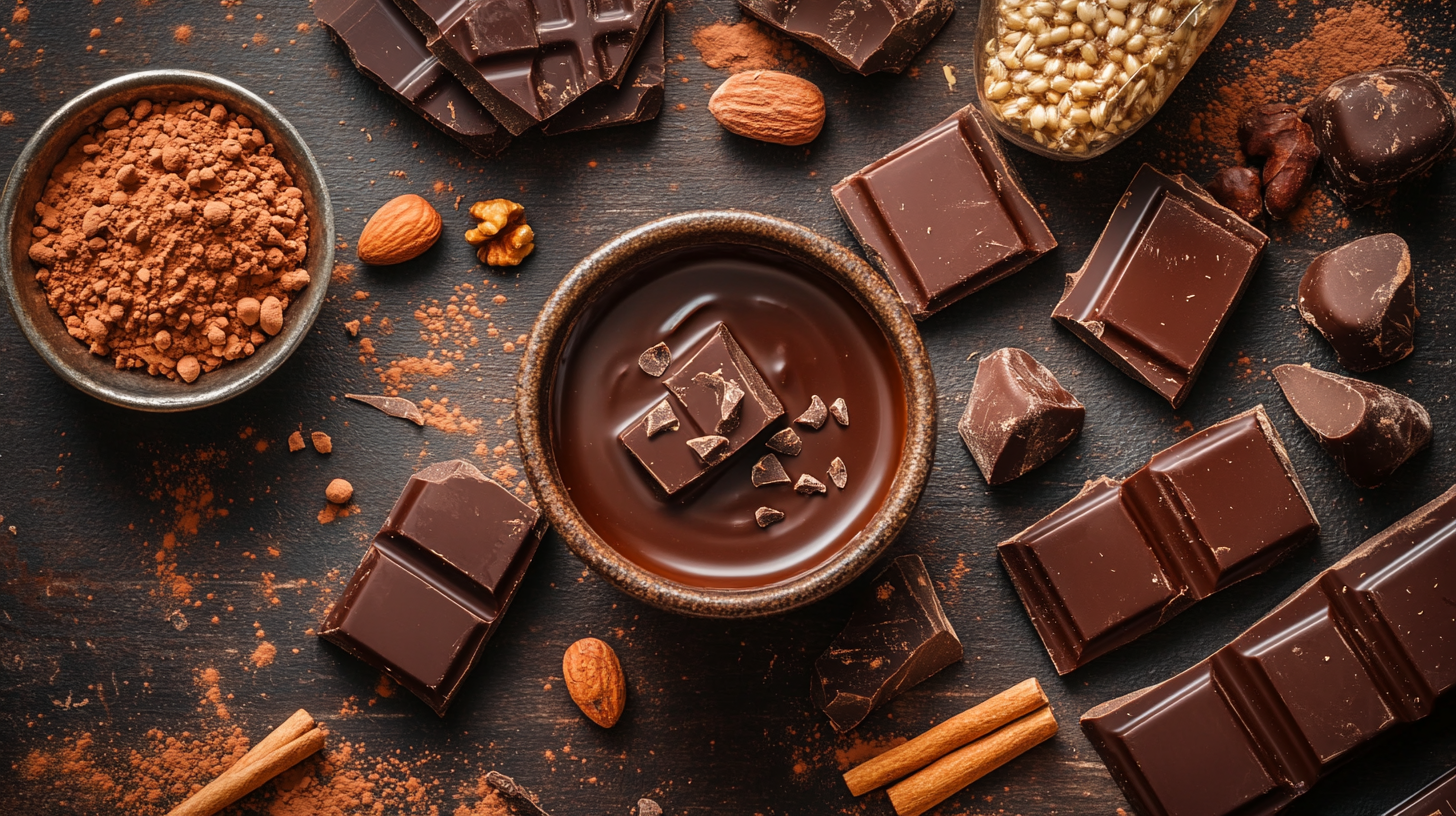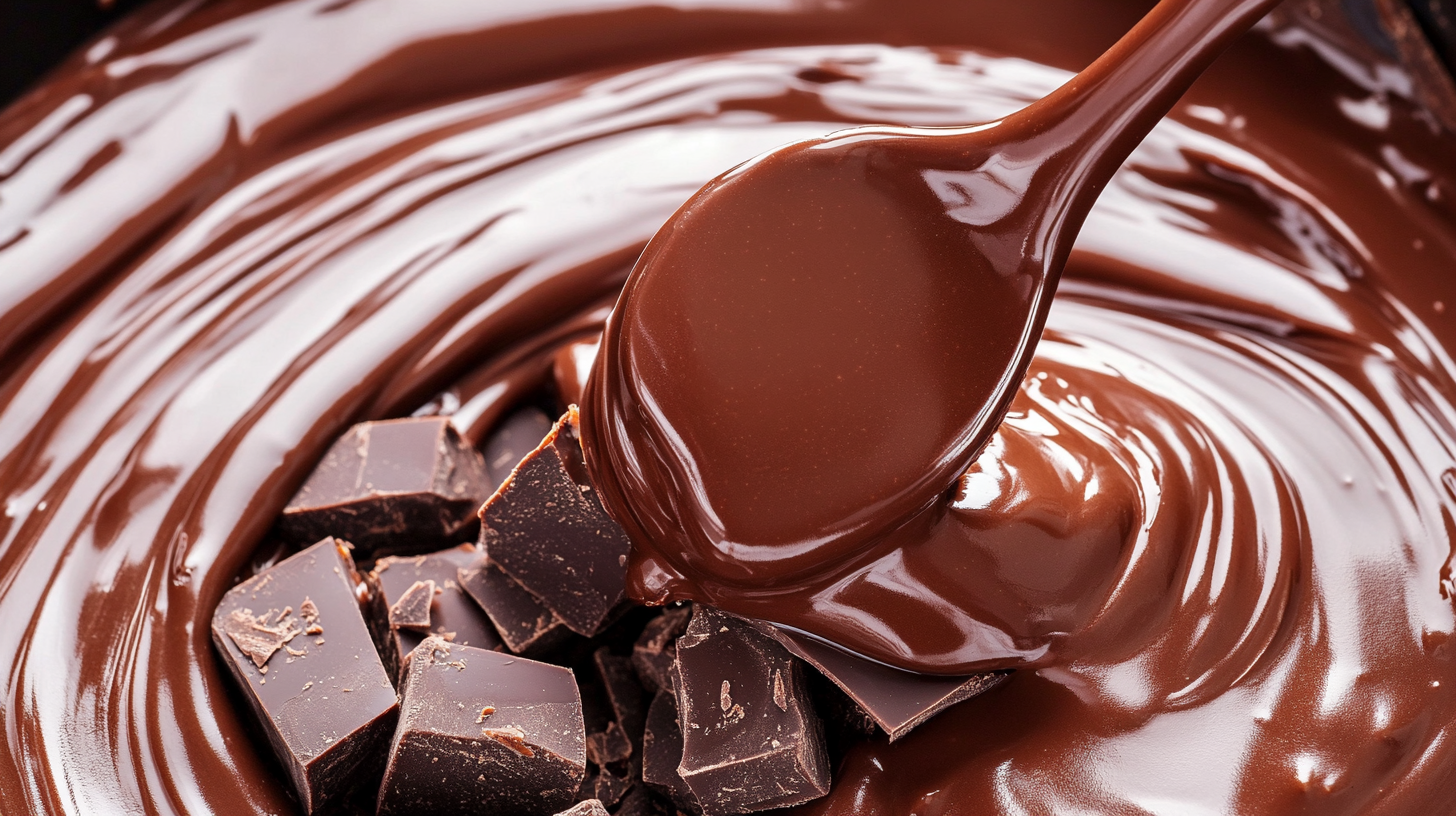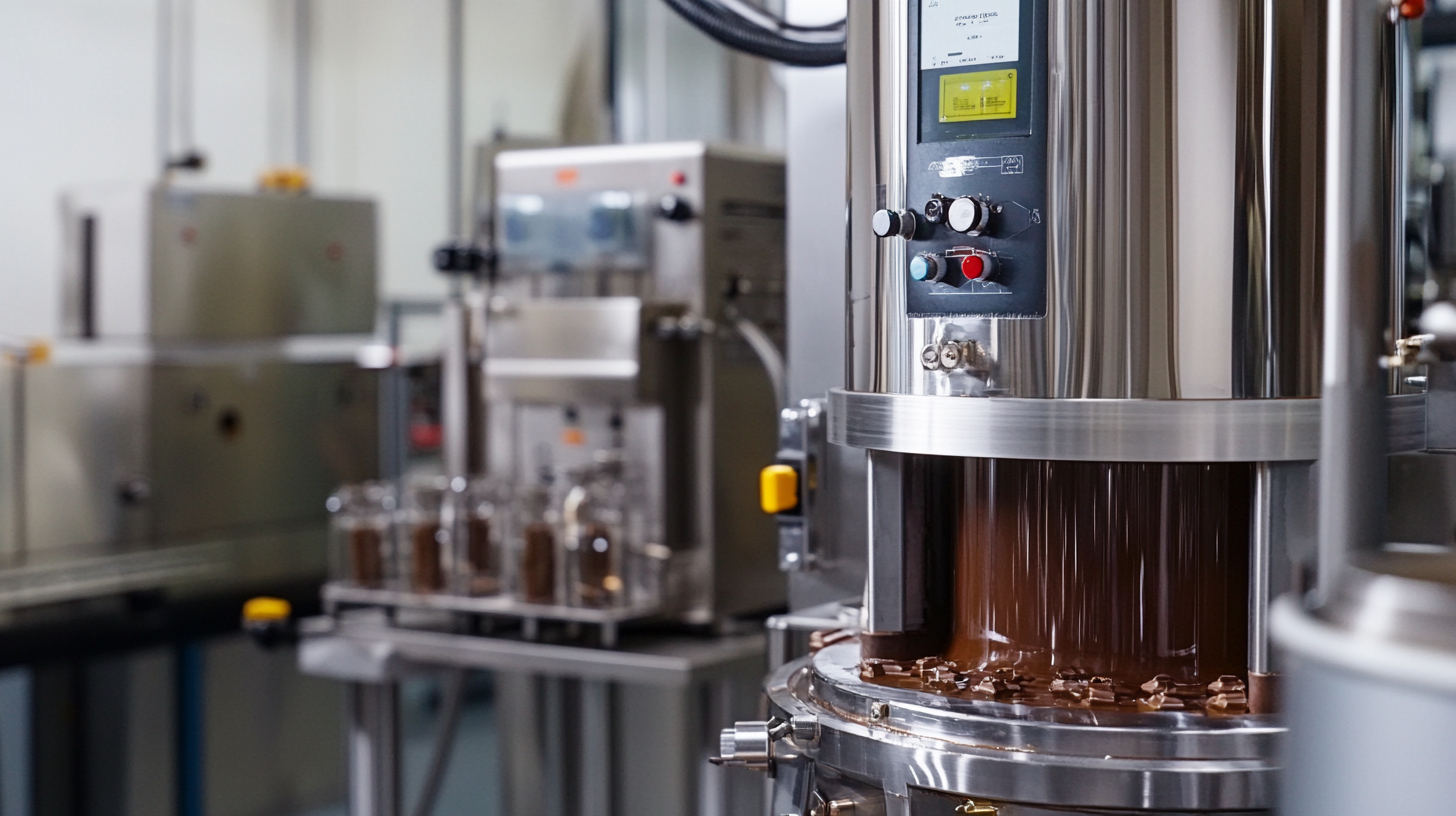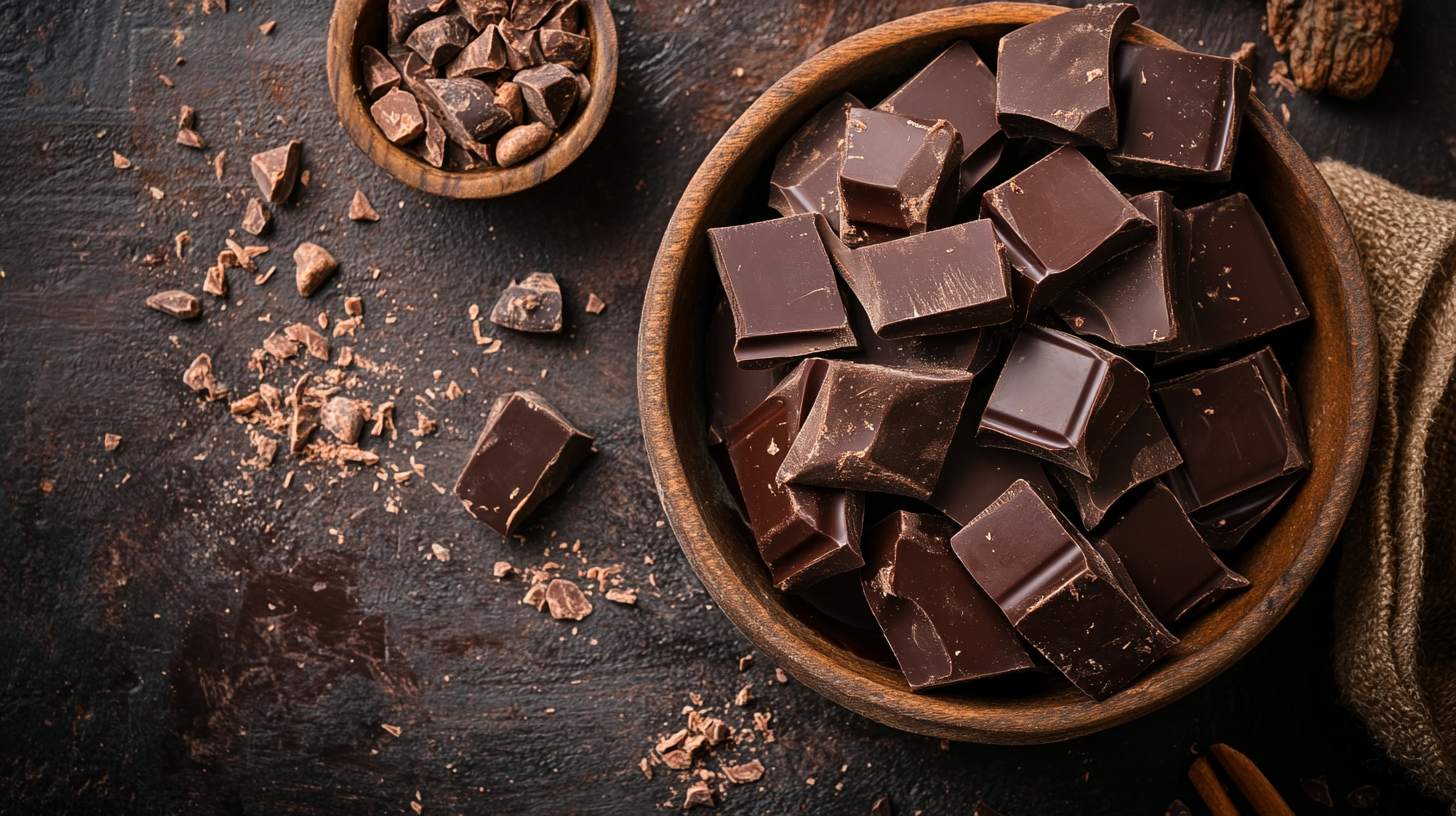Understanding the Essential Specifications of Chocolate Tempering Equipment for Global Buyers
The importance of high-quality chocolate tempering equipment cannot be overstated in the always-changing chocolate industry. According to the latest report from the International Cocoa Organization, the total world chocolate consumption is anticipated to pass the 7.5 million metric tons mark by 2025 due to rising individual preferences for premium and artisanal chocolates. Such an increase necessitates reliable and efficient approaches to chocolate processing, with tempering being one of the most important prerequisites to ensure that textures and sheens of finished goods meet requirements. This is how chocolate manufacturers obtain consistency in quality, increasing aesthetics and taste.
Additionally, according to the latest report from Allied Market Research, the chocolate processing equipment market is about to reach as high as $6.3 billion before 2025, showing increased investment in advanced machinery that meets the industry standards. Meanwhile, as buyers across the world continue to optimize their production processes and improving their product quality, familiarization with the vital chocolate tempering equipment specifications becomes very essential. This blog aims to offer insight into all features, advantages, and consideration points necessary when selecting the perfect tempering machines that will help become competitive in the market.

Key Features to Look for in Chocolate Tempering Equipment
Global buyers should esteem several vital aspects influencing production efficiencies and chocolate quality, while selecting chocolate tempering equipment. Temperature control is one of them. The ideal tempering process is enabled by correct management of temperatures, a prerequisite for proper formation of cocoa butter crystals, allowing for shiny finish and firm snap. The International Cocoa Organization cites that the preferred temperature for tempering dark chocolate would range between 31-32ôC, while the temperature for tempering milk and white chocolate would require slightly lower settings, i.e., around 30ôC. Another important point relates to the capacity of the tempering machine. Considering the global chocolate market is expected to be worth about 161 billion dollars by 2024, manufacturers with high requirements should take into consideration equipment that is able to handle larger batches with maximum efficiency. Small batch tempering machines may very well work for smaller artisanal settings, but continuous tempering machines aid in saving labor and time costs in industrial settings. Such machines, with their smooth processing, are extremely necessary in meeting the rapidly increasing consumer demand for chocolate products. Cleaning and maintenance considerations are not to be neglected. Machinery which is easy to dismantle and clean can minimize downtime and enhance hygiene practices, which is critical in a food production setting. The FSIS (Food Safety and Inspection Service) considerably emphasizes proper sanitation in the food production chain to avert contamination. Accordingly, investing in machinery that is designed to be easily dismantled and cleaned very well improves efficiency in production and safety for chocolate producers across the globe.

The Importance of Temperature Control in Chocolate Tempering
Temperature control is at the heart of chocolate tempering, which holds sway over the final product's quality and texture. The National Confectioners Association asserts that precise temperature control can enhance the characteristics of gloss and snap, which are highly regarded by consumers. Properly tempered chocolate induces the formation of stable cocoa butter crystals and a smooth texture with a glass-like finish. Improper temperature conditions may spawn undesirable side effects, such as blooming, in which chocolate exhibits a dusty white appearance due to fat separation.
In the same vein, an article in the Journal of Food Science supports temperature control, maintaining that certain temperatures, usually between 86°F and 90°F (30°C and 32°C), assure great crystal formation in dark chocolate. The investigation states that firms utilizing modern tempering equipment with automatic temperature control guarantee uniformity in product quality, thereby removing the risk of the variations that usually accompany manual means.
Coupled with this is the chilling figure from Mordor Intelligence, which indicates that the worldwide chocolate market is projected to go past $161 billion by 2024, which signifies an increasing demand for high-quality chocolates. This wave of rising demand requires the installation of tempering equipment that is highly reliable concerning temperature control so that producers can comply with quality standards and simultaneously maximize output. Advanced temperature management not just upholds the sensory qualities of chocolate, but also adds impetus to the growing consumer trend of premium and artisanal chocolate products, which broadens the appeal to the consumer base.

Understanding Different Types of Chocolate Tempering Machines
Potential chocolate equipment buyers need to be aware of various types of chocolate tempering machines available in the market. The basic types of chocolate tempering machines include table-top models, continuous tempering machines, and batch tempering machines, all with the intention of meeting the special needs of chocolate artisans as well as industrial manufacturers.
Table-top tempering equipment, which is handy for small and medium-sized chocolate businesses, is available. These are small and easy to use and usually have capacities that are somewhat limited but allow the artisanal maker to utilize them for special novelties that are more concerned about quality than quantity. For this purpose, these machines would ordinarily have very precise temperature control systems, thereby ensuring that the chocolate is perfectly tempered with very little loss of flavor or texture.
In contrast, continuous tempering machines cater to the large volume of chocolate production. The continuous operation of these machines relies on the circulation of the chocolate through heating and cooling zones to maintain the desired conditions for good tempering. This method permits the maximum possible production volume while ensuring the proper crystalline structure of the chocolate is obtained. Batch tempering machines, on the other hand, offer a hybrid option for medium-sized enterprises. They allow chocolatiers to produce larger batches at one time while providing enough flexibility to temper the chocolate at varying temperatures based on different recipes or the type of chocolate used.
Each tempering machine has its own particular advantages, though choice of which to use will mostly vary with the scale of production and the model of business. It is, therefore, good for the buyer to be able to distinguish between the three so as to select machinery that is in consonance with their production objectives and chocolate quality standards.

How to Choose the Right Size of Tempering Equipment for Your Needs
This may entail balancing downtime on the different temperers against the time each is available. If considering programming requirements, finally, he would look to define secure and accurate mapping, including reporting and signage, wherein the process would run from the point of receiving the inputs through the process to delivering the finished product. Chocolate tempering machine size selection hinges on production scale and the specific requirements of chocolate products. Dark chocolates, for instance, can hold up to 20% cocoa butter and perhaps as little as 10% in white chocolates; at least five different tempering machines should handle this very differentiated output in order to manage the temperature used in quality maintenance.
Increasingly, industry reports are suggesting that the larger demand for equipment is actually increasing alongside like demands in other manufacturing sectors: Take for instance, silicon wafer. Referring to the transition of silicon wafers from 156.75 mm to 166 mm, so chocolate manufacturers are going larger and are also turning to great tempering machines to enjoy cost saving and efficiency improvements. In defining the case for tempering equipment, therefore, potential buyers should evaluate tempering capacity based on their production volume. Smaller operations need tabletop machines, while larger producers can't keep from batch tempering systems capable of handling significant amounts of chocolate keeping it within the optimal temperature range. Right sizing impacts production efficiencies and adds strength to the consistency of the final product, making all-important differences in an area where quality and reliability are so key against stiff market competition.
At the same time, it will also be new features introduced in tempering machinery, just like technology shift features in other industries. For example, temperature control systems are becoming more and more sophisticated. They have been compared with current developments in medical air transport. Even though today's more advanced systems might have similar developments, this particular item puts even higher emphasis on product, safety, and efficiency. With more global buyers penetrating the chocolate market, different variables will contribute to making more informed decisions that suit the operations and maximize profitability in the long term.
Cost Considerations and Budgeting for Chocolate Tempering Equipment
When discussing the proper capital expenditure and budget planning, it's very significant for buyers to invest or know something on their global scale chocolate tempering machines. The price of chocolate tempering equipment selfishly varies depending on the features that come attached and the scale of production the buyer has in mind. Beginners and artisans could go for the entry-level units at approximately several hundred dollars, while greater industrial capacities could go up to thousands. The red tap encompasses a wide range of choices that would oblige the buyer to strictly assess his urgency while reviewing the purchase.
Budgeting for chocolate tempering equipment is an intricate balance. Long-term considerations like maintenance, energy consumption, and repairs would also have to figure in besides the initial acquisition cost. Any accessory or upgrade required to further their class of operation would also have to be part of their planning. Having a well-thought-out budget by integrating all these factors would help cut any unforeseen costs or wastage over their unworthy use to the whole chocolate-making process.
Furthermore, checking funding possibilities is good, above all for smaller businesses with moderate budgets. Instead of pumping in huge money that could cripple a business financially, the option could be to either lease the machine or take out a culinary loan that would enable an enterprise to cash in for higher tempering machines. Proper and well-informed thought and managing the budget would create a conquering manner for the global buyer to follow the steps that will lead him to eventually come up with his chocolate tempering equipment, leading to improved chocolate refinedness and market growth.
